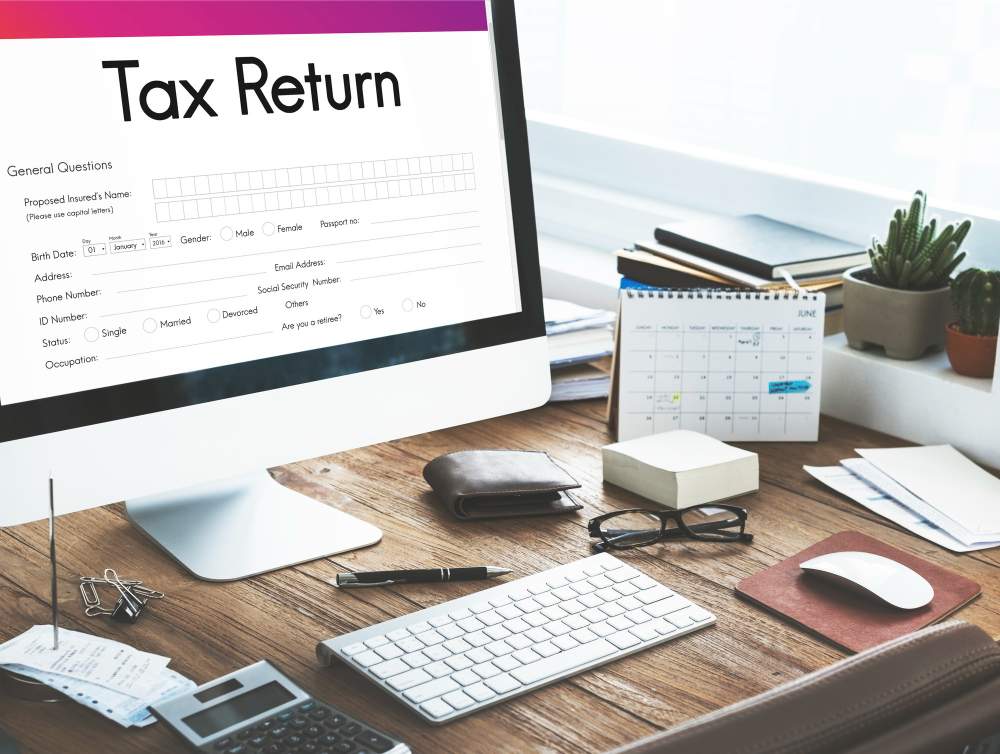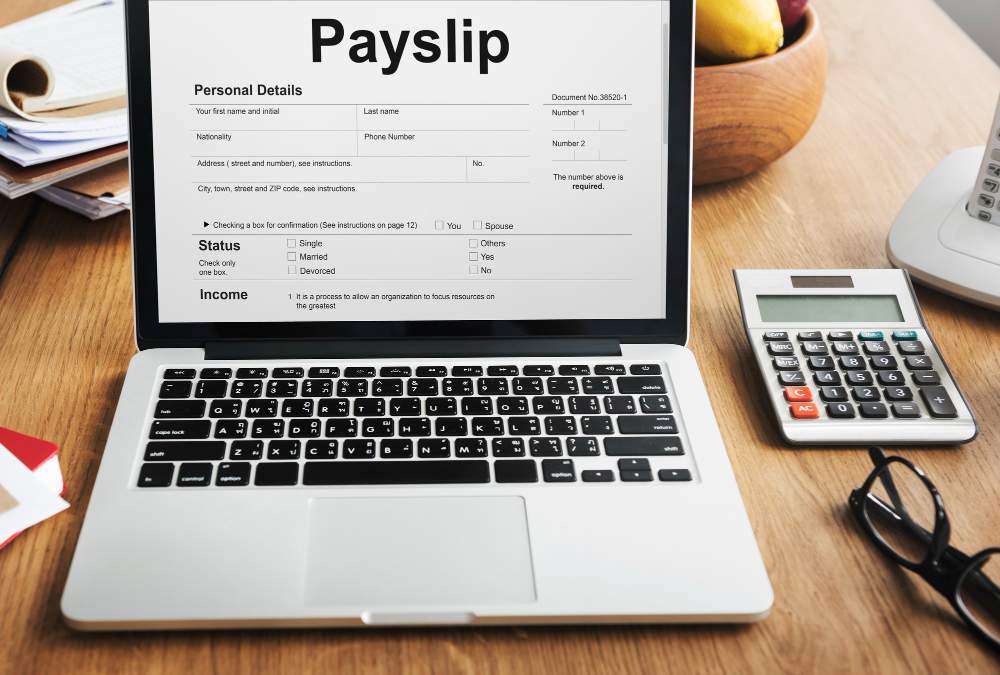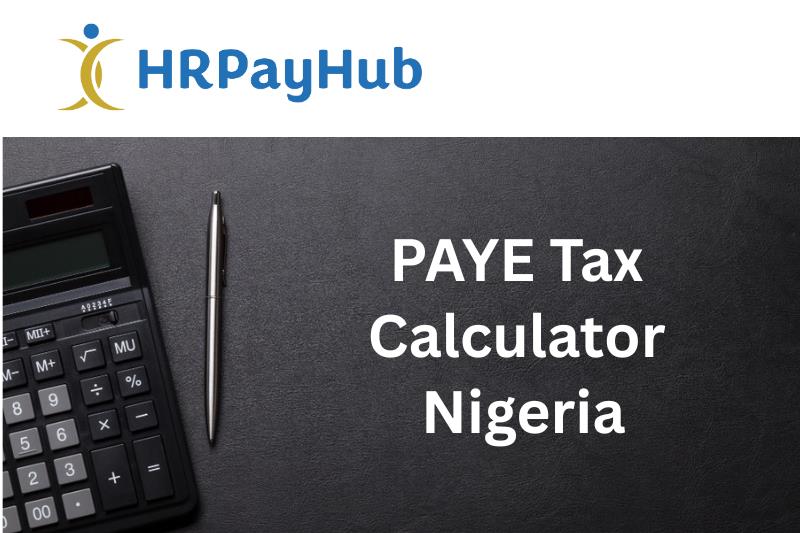
Calculate your taxes with HRPayHub's updated income tax calculator
The Nigeria Tax Act 2025, which came into effect at the beginning of this fiscal year, represents a detailed analysis of how personal income tax is calculated, collected, and administered across the country.
The new tax structure introduces enhanced progressivity, with rates now ranging from 0% to 25%, while simultaneously implementing a complete restructuring of the relief system that eliminates the traditional Consolidated Relief Allowance (CRA) in favor of a more targeted approach. These changes have far-reaching implications for payroll management, tax planning, and compliance across all sectors of the Nigerian economy.
Comprehensive Breakdown of the 2025 Tax Structure in Nigeria
The 2025 personal income tax structure represents a sophisticated graduated system designed to ensure equitable contribution across all income levels. The new brackets have been carefully calibrated to provide relief for lower-income earners while ensuring appropriate contribution from higher-income individuals.
Complete 2025 Tax Bracket Breakdown:
Bracket 1: ₦0 - ₦300,000 (7% Rate) This foundational bracket affects all Nigerian taxpayers and represents a slight increase from previous rates. The 7% rate applies to the first ₦300,000 of annual income, ensuring that even the lowest earners contribute to national development while maintaining affordability.
Bracket 2: ₦300,001 - ₦600,000 (11% Rate) The second bracket captures income between ₦300,001 and ₦600,000, taxed at 11%. This bracket primarily affects mid-level employees and represents a moderate increase that balances revenue generation with taxpayer capacity.
Bracket 3: ₦600,001 - ₦1,100,000 (15% Rate) Income falling within ₦600,001 to ₦1,100,000 faces a 15% tax rate. This bracket encompasses many professional-level salaries and represents a significant portion of the Nigerian middle class.
Bracket 4: ₦1,100,001 - ₦1,600,000 (19% Rate) The fourth bracket, covering ₦1,100,001 to ₦1,600,000, is taxed at 19%. This level typically includes senior professionals, middle management, and specialized technical roles across various industries.
Bracket 5: ₦1,600,001 - ₦3,200,000 (21% Rate) Income between ₦1,600,001 and ₦3,200,000 faces a 21% tax rate. This bracket captures senior management positions, specialized consultants, and experienced professionals across multiple sectors.
Bracket 6: ₦3,200,001 - ₦49,999,999 (24% Rate) The penultimate bracket covers income from ₦3,200,001 to ₦49,999,999, maintaining the 24% rate that was previously the highest tier. This bracket includes executive positions, senior partners, and high-earning professionals.
Bracket 7: ₦50,000,000 and Above (25% Rate) The new highest bracket, introduced in 2025, applies a 25% rate to income exceeding ₦50,000,000 annually. This bracket specifically targets ultra-high earners and represents the government's commitment to progressive taxation principles.
Mathematical Application of Progressive Taxation
Understanding how these brackets work together is crucial for accurate tax calculation. The progressive system means that each bracket's rate applies only to the income within that specific range, not to the entire income amount.
Calculation Methodology:
For any given annual income, tax calculation proceeds systematically through each applicable bracket:
- First ₦300,000: Always taxed at 7% = ₦21,000
- Next ₦300,000 (₦300,001-₦600,000): Taxed at 11% = ₦33,000 maximum
- Next ₦500,000 (₦600,001-₦1,100,000): Taxed at 15% = ₦75,000 maximum
- Next ₦500,000 (₦1,100,001-₦1,600,000): Taxed at 19% = ₦95,000 maximum
- Next ₦1,600,000 (₦1,600,001-₦3,200,000): Taxed at 21% = ₦336,000 maximum
- Next ₦46,800,000 (₦3,200,001-₦50,000,000): Taxed at 24% = ₦11,232,000 maximum
- Amount above ₦50,000,000: Taxed at 25%
From CRA to Targeted Reliefs
Elimination of Consolidated Relief Allowance
The most significant administrative change in the 2025 tax reforms is the complete elimination of the Consolidated Relief Allowance (CRA), which had been a cornerstone of Nigerian tax relief for decades. The CRA provided a standardized deduction that was applied uniformly regardless of actual expenses or circumstances.
Under the previous system, the CRA offered:
- A fixed percentage of annual income (typically 1% + ₦200,000)
- Universal application regardless of actual expenses
- Simplified administration and calculation
- Limited relevance to actual taxpayer circumstances
Introduction of Rent Relief System
The new system replaces the CRA with a targeted rent relief mechanism that allows taxpayers to claim 20% of their actual annual rent payments, subject to a maximum cap of ₦500,000 per year.
Rent Relief Specifications:
Calculation Method: 20% of actual annual rent paid Maximum Claimable Amount: ₦500,000 per tax year Minimum Documentation Required:
- Valid tenancy agreement
- Proof of rent payments (receipts, bank transfers)
- Landlord identification and tax details where applicable
Rent Relief Scenarios:
Scenario 1: Annual rent of ₦1,200,000
- 20% of ₦1,200,000 = ₦240,000
- Claimable amount: ₦240,000 (within cap)
Scenario 2: Annual rent of ₦3,000,000
- 20% of ₦3,000,000 = ₦600,000
- Claimable amount: ₦500,000 (capped at maximum)
Scenario 3: Annual rent of ₦800,000
- 20% of ₦800,000 = ₦160,000
- Claimable amount: ₦160,000 (within cap)
Documentation Requirements and Compliance
The shift to rent relief necessitates enhanced documentation and record-keeping requirements. Taxpayers must maintain comprehensive records to substantiate their claims:
Primary Documentation:
- Original or certified copies of tenancy agreements
- Complete payment records (bank statements, receipts, transfer confirmations)
- Landlord identification and tax compliance certificates
- Property documentation where applicable
Secondary Documentation:
- Utility bills showing occupancy
- Employment letters confirming work location (for justifying accommodation needs)
- Previous year's tax filings for consistency verification
Impact Analysis of Relief System Changes
The transition from CRA to rent relief has varying impacts across different income levels and circumstances:
Positive Impacts:
- More equitable relief based on actual expenses
- Higher relief for individuals paying substantial rent
- Encouragement of formal rental agreements
- Enhanced tax system transparency
Challenges:
- Increased administrative burden on taxpayers
- Higher documentation requirements
- Potential disputes over acceptable documentation
- Complex verification processes for tax authorities
Enhanced Exemptions and Special Provisions
Compensation for Loss of Employment
One of the most significant enhancements in the 2025 tax reforms is the substantial increase in exemption thresholds for compensation related to loss of employment or personal injury.
Previous Threshold: ₦10,000,000 New 2025 Threshold: ₦50,000,000
This five-fold increase recognizes the economic realities facing Nigerian workers and provides substantial protection for individuals receiving severance payments, redundancy compensation, or personal injury settlements.
Qualifying Compensation Types:
- Severance packages upon termination
- Redundancy payments due to organizational restructuring
- Voluntary separation scheme benefits
- Personal injury compensation settlements
- Wrongful termination settlements
- Early retirement compensation packages
Professional Development and Training Exemptions
The 2025 reforms maintain and in some cases enhance exemptions for professional development expenses, recognizing the importance of continuous learning and skill development in Nigeria's evolving economy.
Qualifying Professional Development Expenses:
- Certification and professional examination fees
- Industry-specific training programs
- Postgraduate education directly related to current employment
- Professional membership dues and subscriptions
- Technical skill development courses
Sector-Specific Impact Analysis
Banking and Financial Services
The banking sector faces unique challenges with the 2025 tax reforms due to the industry's traditionally high compensation structures and bonus-heavy remuneration packages.
Key Impacts:
- Executive compensation packages above ₦50 million now face the 25% top rate
- Variable compensation (bonuses) may push employees into higher brackets
- Complex calculations for stock options and deferred compensation
- Enhanced requirements for payroll management systems to handle variable compensation
Administrative Challenges:
- Mid-year bonus calculations affecting annual tax projections
- Stock option taxation complexities
- Multiple currency compensation packages
- Quarterly performance bonus calculations
Technology and Telecommunications
Nigeria's rapidly growing tech sector is experiencing mixed impacts from the new tax structure, with implications varying significantly based on role level and compensation structure.
Startup and SME Technology Companies:
- Junior developers and early-career professionals benefit from progressive structure
- Stock option taxation becomes more complex
- Remote work arrangements complicate rent relief claims
- International payment structures require specialized tax planning
Established Technology Companies:
- Senior engineers and product managers face higher effective rates
- Stock compensation plans require restructuring
- HR management systems need updates for complex equity compensation
- International assignment taxation becomes more complex
Oil and Gas Industry
The oil and gas sector, traditionally featuring high compensation packages, faces significant impacts from the new tax brackets and particularly the introduction of the 25% top rate.
Specific Challenges:
- Expatriate compensation packages require restructuring
- Offshore allowances and hardship benefits need reclassification
- Complex international taxation arrangements
- Enhanced documentation requirements for overseas assignments
Manufacturing and Industrial Sectors
Manufacturing companies face unique challenges related to the new rent relief system and varying regional tax administration capabilities.
Key Considerations:
- Factory location and worker accommodation arrangements
- Varying state-level administrative capabilities
- Supply chain disruption during transition period
- Payroll processing complexity for multiple locations
Implementation Challenges and Solutions
Administrative Complexity
The 2025 tax reforms introduce significant administrative complexity that affects both taxpayers and tax authorities. Understanding these challenges is crucial for successful implementation.
Primary Administrative Challenges:
Documentation Requirements: The shift to evidence-based reliefs requires enhanced documentation systems and procedures. Organizations must develop comprehensive record-keeping systems to track and verify employee rent relief claims.
System Integration: Existing payroll and HR systems require significant updates to accommodate the new tax brackets and relief mechanisms. Many organizations are investing in comprehensive HR and payroll solutions to manage these complexities.
Training and Education: HR professionals, payroll administrators, and finance teams require extensive training on the new system. This includes understanding calculation methodologies, documentation requirements, and compliance procedures.
Verification Processes: Tax authorities are developing new verification procedures for rent relief claims, requiring enhanced coordination between taxpayers and tax officials.
Technology Solutions and Automation
The complexity of the 2025 tax system makes automation essential for accurate and efficient tax management.
Essential Technology Components:
Advanced Payroll Systems: Modern payroll systems must handle complex progressive tax calculations, multiple relief types, and varying documentation requirements. Professional payroll services become essential for organizations managing large employee populations.
Document Management Systems: Robust document management capabilities are required to track and store rent relief documentation, employment records, and tax compliance materials.
Calculation Engines: Sophisticated calculation engines that can handle progressive tax brackets, multiple relief types, and complex scenarios become essential for accurate tax computation.
Reporting and Analytics: Enhanced reporting capabilities are necessary for compliance monitoring, tax planning, and financial analysis.
Best Practices for Compliance Management
Organizational Compliance Framework
Successful management of the 2025 tax requirements requires comprehensive organizational frameworks that address all aspects of tax compliance.
Essential Framework Components:
Policy Development: Clear policies governing rent relief claims, documentation requirements, and approval processes ensure consistent application across the organization.
Procedure Documentation: Detailed procedures for tax calculation, relief processing, and documentation management provide operational guidance for HR and payroll teams.
Training Programs: Comprehensive training programs for all stakeholders ensure understanding of requirements and procedures.
Audit and Review Processes: Regular audits and reviews identify compliance gaps and improvement opportunities.
Employee Communication Strategy
Effective communication with employees about the new tax system is essential for successful implementation and compliance.
Communication Elements:
Educational Materials: Comprehensive guides explaining the new tax brackets, relief systems, and documentation requirements help employees understand their obligations.
Regular Updates: Ongoing communication about system changes, clarifications, and implementation updates keeps employees informed and compliant.
Support Resources: Help desk services, FAQ documents, and consultation opportunities provide employees with necessary support for compliance.
Feedback Mechanisms: Systems for collecting and addressing employee feedback help identify issues and improve processes.
Calculating Your 2025 Tax Liability: Step-by-Step Guide
Manual Calculation Process
Understanding how to manually calculate your tax liability provides valuable insight into the new system and helps verify automated calculations.
Step 1: Determine Gross Annual Income Calculate total annual income from all sources, including salary, allowances, bonuses, and other compensation.
Step 2: Apply Progressive Tax Brackets Calculate tax for each applicable bracket using the rates and thresholds outlined earlier.
Step 3: Calculate Available Reliefs Determine rent relief based on actual annual rent payments (20% of rent, capped at ₦500,000).
Step 4: Apply Reliefs and Exemptions Subtract applicable reliefs and exemptions from calculated tax liability.
Step 5: Verify Calculation Double-check calculations and ensure all applicable reliefs have been claimed.
Professional Calculation Tools
Given the complexity of the new system, professional calculation tools become essential for accuracy and efficiency.
Tool Requirements:
- Accurate implementation of all tax brackets
- Comprehensive relief calculation capabilities
- Scenario modeling and planning features
- Export and documentation capabilities
- Regular updates for regulatory changes
HRPayHub's free tax calculator provides comprehensive calculation capabilities designed specifically for Nigeria's 2025 tax system, including all brackets, reliefs, and special provisions.
Conclusion
Managing Nigeria's 2025 tax requirements requires professional-grade tools and expertise. HRPayHub offers comprehensive solutions including advanced tax calculators, payroll management systems, and expert consultation services designed specifically for the Nigerian market.
For organizations seeking to optimize their tax compliance and payroll management, our professional consulting services offer customized solutions that address specific industry requirements and organizational needs. Stay ahead of regulatory changes and ensure complete compliance with Nigeria's evolving tax landscape through our comprehensive HR management platforms and expert support services.
This comprehensive guide to Nigeria's 2025 income tax rates provides the detailed information needed to understand and implement the new system. For ongoing updates and additional resources, visit our complete blog collection covering all aspects of Nigerian HR and payroll management.



















